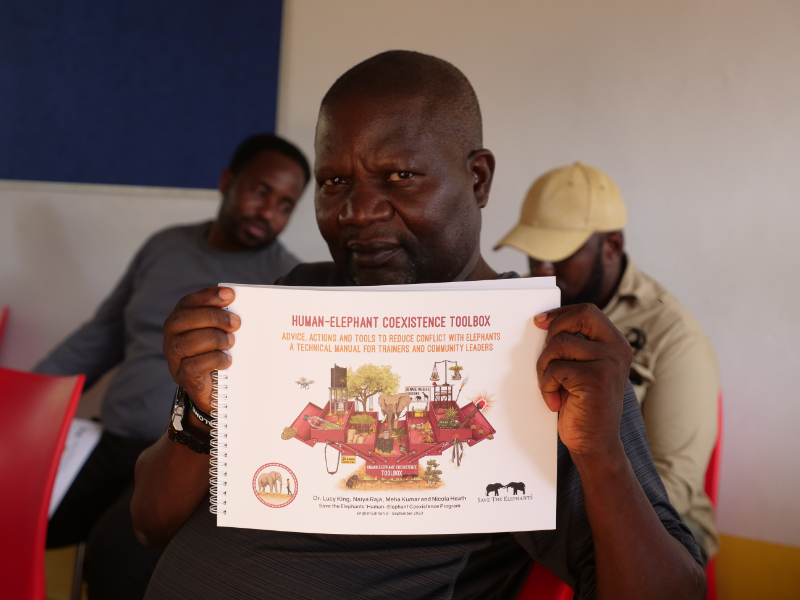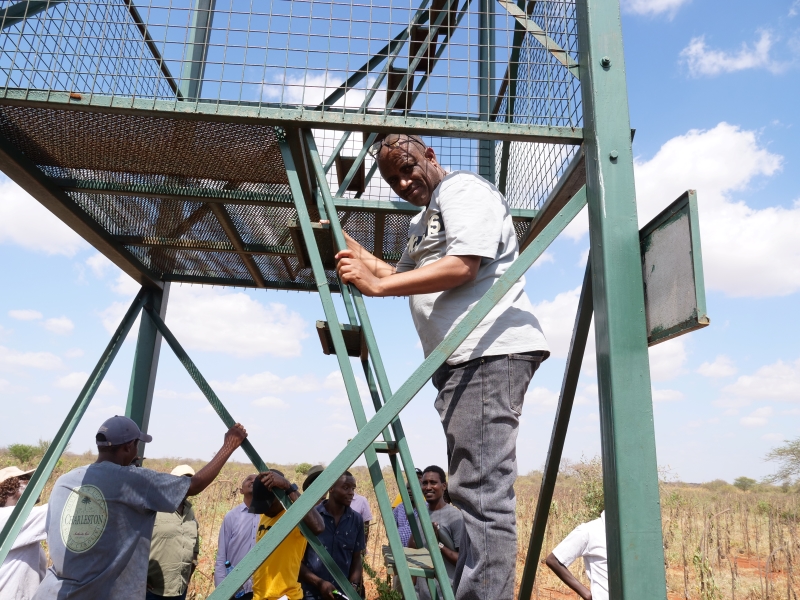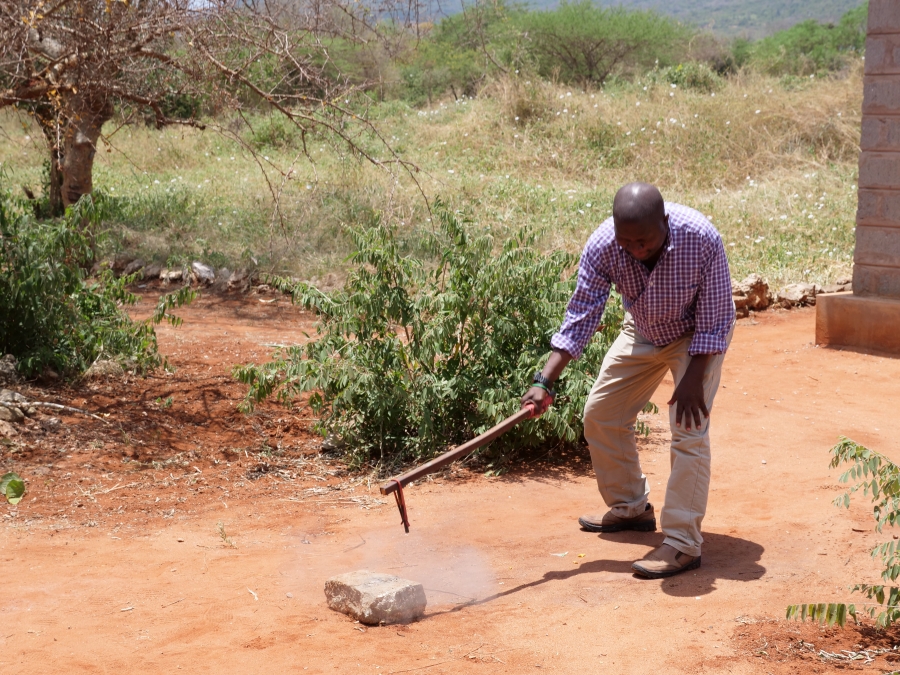African-led solutions to human-elephant conflict

Alex and a copy of STE's Human-Elephant Coexistence toolbox. Credit - Meha Kumar, Save the Elephants.
Human – elephant coexistence: Lessons from Tsavo
The Elephant Protection Initiative (EPI) Foundation believes that Human-Elephant Conflict (HEC) solutions must be African-led, with leading roles fulfilled by African governments and their wildlife authority experts. These institutions currently face significant challenges, including inadequate capability, capacity, and funding to address HEC, climate change impacts and the complex land use planning across elephant habitats. The EPI Foundation aims to strengthen these institutions through structured training, mentoring, partnerships, knowledge exchange, and network-building among EPI member states.

This project aims to advance local solutions and cultivate harmonious relationships between communities and elephants, and the EPIF sent Hailu Zerfu and Mezgebe Seyoum from the Ethiopian Wildlife Conservation Authority (EWCA,) alongside Alex Chunga from the Malawian Department of National Parks and Wildlife (DNPW), to an impactful Training of Trainers Workshop. Hosted by the NGO Save the Elephants at their research centre in Tsavo National Park in Kenya during February 2024, the workshop brought together participants from across Eastern Africa, specifically Ethiopia, Kenya, Malawi, and Tanzania to learn about strategies for living harmoniously with elephants in conflict hotspots.
After visiting various African regions considered as HEC hotspots, Save the Elephants observed a glaring absence of protection for poor local farmers, prompting the development of their HEC toolbox. Many farmers complain that they are constantly raided yet lack even basic fences to serve as a barrier between them and the hungry elephants. Empowering the wildlife authorities to address HEC in communities is crucial for helping farmers safeguard their land and livelihoods. Training participants from IKOS East Africa, the Elephant Protection Initiative, the Baringo County Conservancies Association, and Kamnarok National Reserve will enable them to train others and share knowledge effectively within their own communities.

The three-day workshop commenced with a comprehensive exploration of the HEC Toolbox and its practical applications. Innovative HEC mitigation methods were introduced, including chilli rubs to protect crops, buzzboxes, watchtowers, noise deterrents, and live demonstrations of a noise cannon and matchstick banger. Attendees also learned how to make smelly elephant repellent using common farm ingredients like chilli, garlic, ginger, neem leaves, cooking oil, dung, and rotten eggs.

Participants also had the opportunity to visit Mwambiti and Kajire Farms, where they witnessed firsthand how these methods can be practically applied to effectively safeguard both lives and livelihoods from elephant disturbances.
The Training of Trainers Workshop aimed at fostering coexistence between humans and elephants, marked a huge success for our EPI HEC focal points. The EPI Foundation remains committed to facilitating the exchange of expertise among elephant range states to address the pressing issue of HEC across Africa.
 Group photo of Training of Trainers participants and trainers. Credit - Aashman Wason, Save the Elephants.
Group photo of Training of Trainers participants and trainers. Credit - Aashman Wason, Save the Elephants.
Written by Clara Rincuni, Christina Godding, and Barnaby Phillips. For more information on this Darwin Initiative C&C project DARCC019, led by Elephant Protection Initiative Foundation, please click here.

 Back
Back